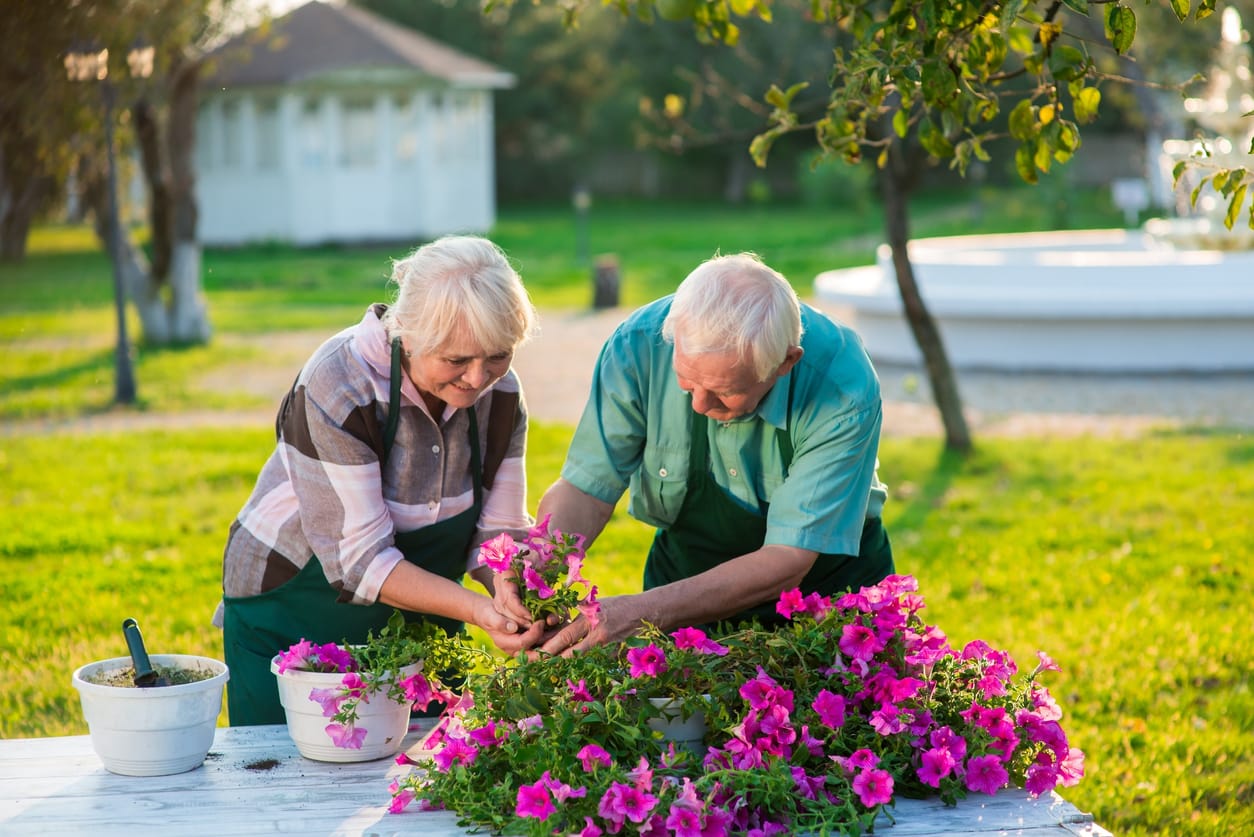Sensory gardens are serene environments that offer a tranquil retreat for seniors, providing a refreshing escape from the everyday. These spaces are crucial for their role in enriching the well-being of older adults through sensory experiences. Let's delve into the importance of sensory gardens in senior living environments and explore how they foster holistic health and transform the lives of our elderly loved ones.
Elements and principles of sensory gardens tailored for senior living spaces
Sensory gardens are carefully designed to engage the senses of sight, smell, touch, taste, and sound. In senior living spaces, these gardens are curated to cater to the specific needs and preferences of older individuals.
Elements such as colorful flowers, fragrant herbs, textured plants, wind chimes, and water features are strategically incorporated to create a stimulating and enjoyable environment for seniors. The principles of accessibility and safety are also prioritized to ensure that seniors of all abilities can fully participate and benefit from the sensory experience.
Evolution of sensory gardens in senior care and their impact on elderly well-being
Over the years, sensory gardens have evolved from simple green spaces to therapeutic landscapes with a focus on promoting health and well-being. Initially introduced in healthcare settings, these gardens have proven to have significant positive effects on the physical, cognitive, and emotional health of seniors.
Research has shown that spending time in sensory gardens can reduce stress, improve mood, increase physical activity, and enhance the overall quality of life for older adults. As a result, sensory gardens have become increasingly popular in senior living communities, serving as essential components of holistic care programs.
Insight into sensory stimulation and its benefits for seniors
Family caregivers play a crucial role in recognizing and understanding the importance of sensory stimulation for seniors. They observe firsthand how sensory experiences can positively impact the well-being of their loved ones.
Sensory stimulation not only provides enjoyment and relaxation but also has therapeutic benefits, such as improving cognitive function, reducing agitation, and promoting social interaction. Caregivers often witness the profound effects of sensory gardens on seniors, noting how these spaces create moments of joy, connection, and emotional comfort for their aging family members.
The Impact of Sensory Gardens on Seniors: A Caregiver's Perspective
Physical well-being
Seniors benefit from sensory gardens by being encouraged to engage in physical activity and movement. The vibrant atmosphere of these gardens motivates seniors to stroll, stretch, and interact with their surroundings, promoting overall mobility and well-being.
Additionally, improvements in balance and coordination are observed among seniors who spend time in sensory gardens, as the varied terrain and sensory elements challenge them to navigate their surroundings, leading to enhanced stability and coordination over time.
Cognitive enhancement
Witnessing firsthand, caregivers note how sensory gardens foster memory recall and cognitive function in seniors. The stimulating sights, sounds, and scents evoke memories and stimulate mental activity, enhancing cognitive abilities and awareness. Additionally, these gardens play a crucial role in mitigating cognitive decline and promoting mental acuity among seniors.
Regular exposure to sensory stimuli helps seniors maintain cognitive function, sharpen focus, and foster mental clarity, supporting overall cognitive health.
Emotional enrichment
Sensory gardens profoundly impact seniors' emotional well-being, eliciting positive emotions and reducing stress levels. The serene atmosphere fosters peace and contentment, uplifting seniors' moods and promoting happiness and fulfillment. Additionally, these gardens cultivate a tranquil environment conducive to emotional well-being. Their beauty provides seniors with a sanctuary to relax, unwind, and find solace, promoting emotional resilience and overall emotional health.
Challenges and Considerations for Family Caregivers
Identifying suitable sensory garden designs for seniors with different needs and abilities
Identifying suitable sensory garden designs for seniors with different needs and abilities presents a multifaceted challenge. Family caregivers must navigate varying preferences and physical limitations to create an inclusive space that caters to the diverse needs of seniors. This involves thoughtful consideration of elements such as pathways, seating areas, and plant selections to ensure accessibility and engagement for all.
Maintenance and sustainability of sensory gardens
Maintenance and sustainability of sensory gardens require ongoing dedication and resources from family caregivers. Keeping the garden vibrant and thriving entails regular watering, pruning, and upkeep to preserve its beauty and effectiveness. Moreover, sustainability practices such as composting and eco-friendly pest management must be implemented to minimize environmental impact and promote long-term sustainability.
FAQs About Sensory Gardens
How can seniors with mobility issues benefit from sensory gardens?
Features such as raised garden beds, benches for resting, and wheelchair-accessible pathways ensure that seniors with mobility challenges can still enjoy the therapeutic benefits of the garden.
Are there any specific activities or programs that can be organized in sensory gardens for seniors?
Sensory gardens provide a versatile space for various activities and programs tailored to seniors' interests and abilities. These may include gardening workshops, nature walks, outdoor yoga or tai chi sessions, art classes, or simply social gatherings where seniors can relax and connect with others amidst the beauty of the garden.
Are there any specific plants or features that are recommended for inclusion in a sensory garden?
While the selection of plants and features can vary depending on factors like climate and space availability, some common elements found in sensory gardens include fragrant flowers, textured foliage, wind chimes, and water features. Consulting with a landscape designer or horticultural therapist can help determine the best plants and features for a particular sensory garden.
Key Takeaways
Sensory gardens stand as transformative sanctuaries for seniors, offering a multitude of benefits as perceived by family caregivers. From enhancing physical mobility and cognitive function to fostering emotional well-being and reducing stress, these gardens play a pivotal role in nurturing the holistic health of seniors. Looking ahead, there is a vision for a future where sensory gardens seamlessly integrate into elder care practices, becoming indispensable components of senior living environments. By championing the widespread adoption of sensory gardens, caregivers envision a landscape where seniors thrive, finding joy, comfort, and fulfillment amidst the vibrant beauty of these therapeutic spaces.





